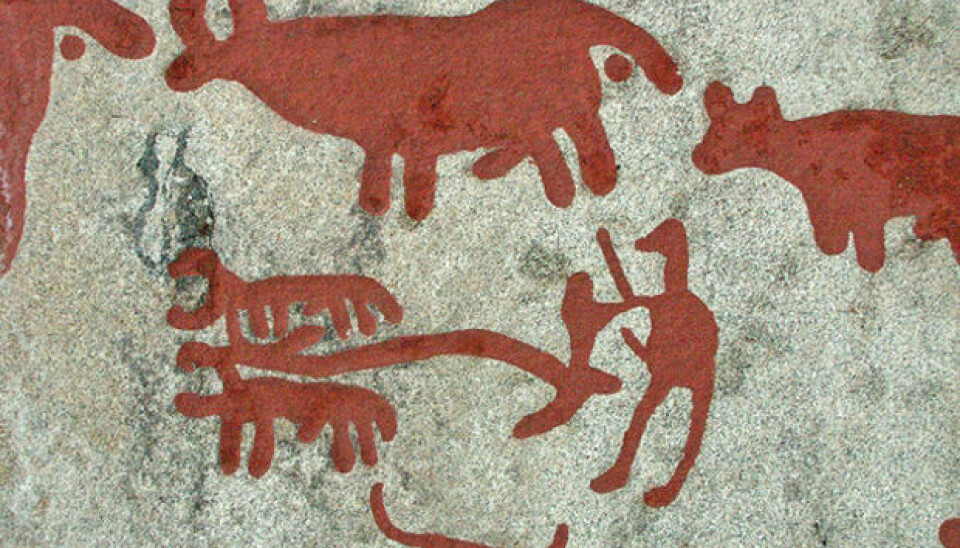
The people who changed Norway
About 4,400 years ago a boat came to Norway. The people aboard had shiny weapons, a foreign culture and a new economic system based on agriculture. The country would never be the same.
Denne artikkelen er over ti år gammel og kan inneholde utdatert informasjon.
We can thank agriculture for our current population of seven billion and for much of what we consider as culture and civilisation.
The transition to agriculture is probably the most significant single episode in Norwegian history. We are used to thinking of this as a gradual process taking hundreds, or perhaps thousands, of years.
Changed Norway
Now several archaeologists are convinced that the transition could have been sudden and been triggered by small groups of immigrating farmers. They could have had more momentum and a larger impact by representing a new common European culture.
Perhaps a boat that landed at a coastal settlement started it all. Norway’s south-west coast is the most likely bridgehead.
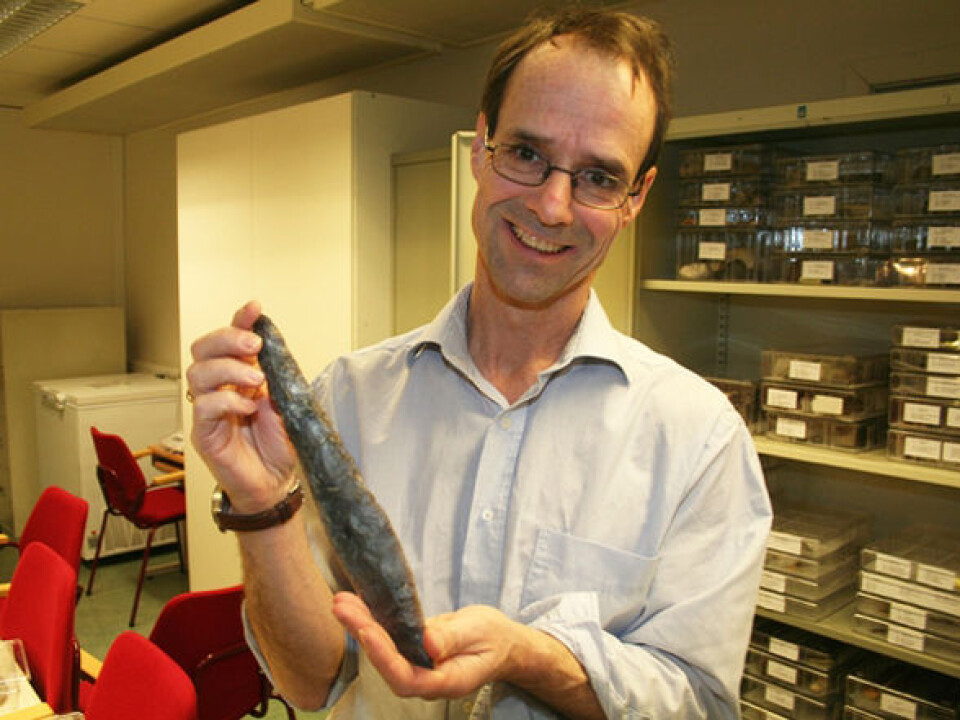
Agriculture then spread at record speed along the coast and into the fjords.
The hinterlands
In the course of the Neolithic (Stone Age) period most of Europe converted to agriculture as the key way of life. About 8,500 years ago it started spreading north from the south-eastern corner of Europe.
The diffusion of agriculture was a process that occurred in leaps and bounds. But inevitably the hunter-gatherers along the way were either convinced that agricultural was their best bet, or they were displaced through competition with others who had become farmers.
At Skagerrak, the stretch of ocean separating Norway and Denmark, this transformation ground to a halt. For at least 1,500 years this body of water marked the northern frontier of agriculture in Europe.
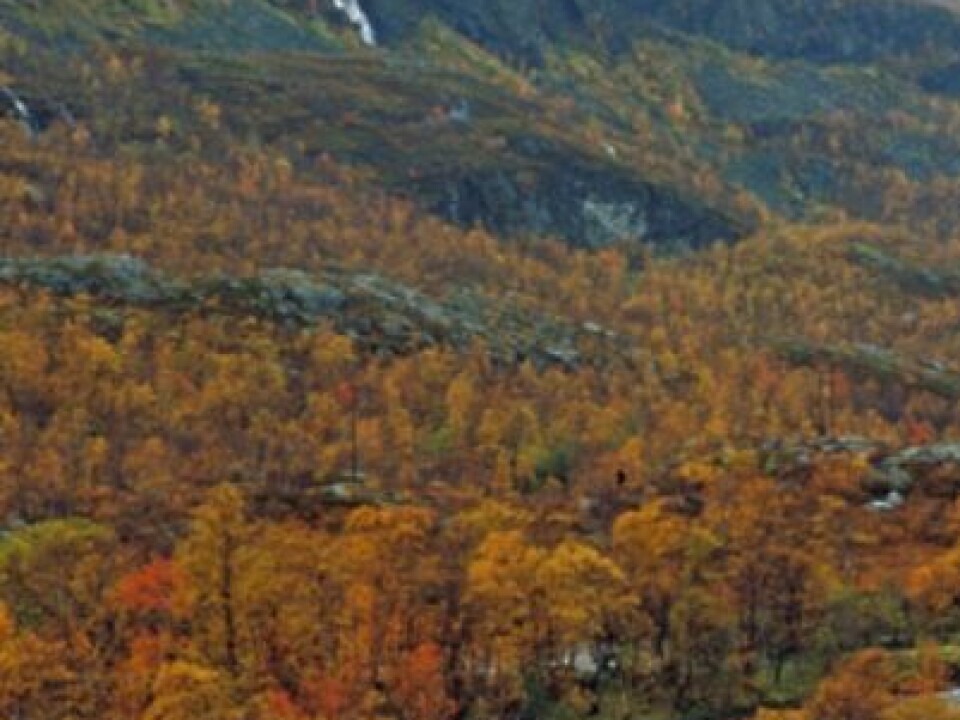
Norway was outside this European development of agriculture.
That might not be too surprising. Norway was geographically and topographically less suited to agriculture and it was rich in resources for hunter-gatherers along the coast, in forests and up in the mountains.
Why agriculture?
We must have had a vital hunting, fishing and gathering culture.
Why would anyone really want to begin with the tedious work of cultivating grain and feeding livestock up here in the north?
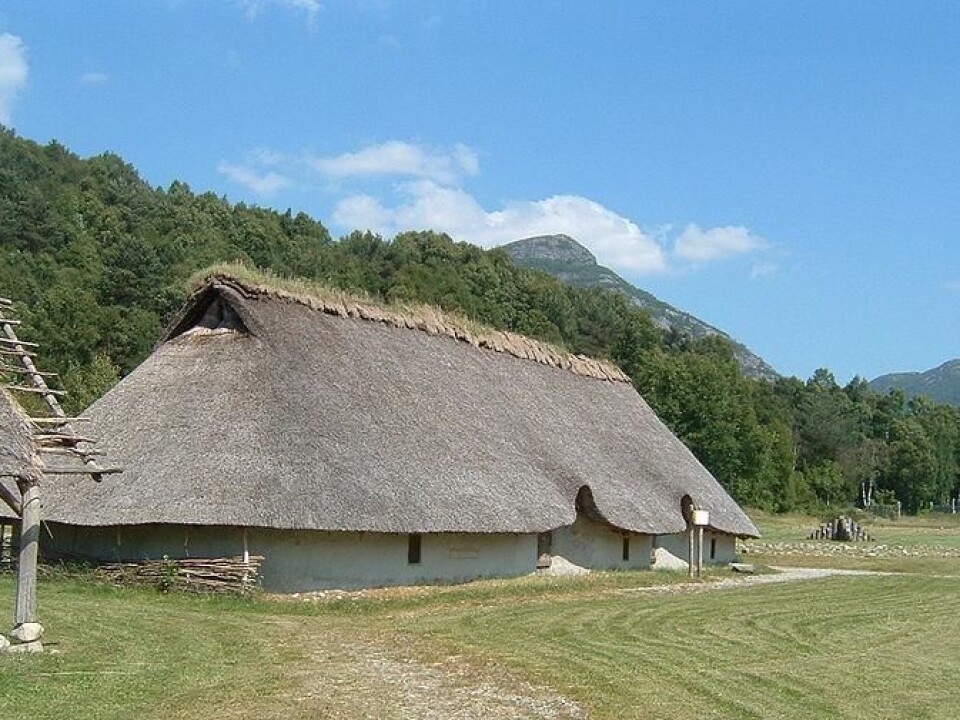
This question has intrigued Archaelogist Christopher Prescott at the University of Oslo for much of his academic career. He wrote his doctoral thesis from a mountainous area in the Western part of Norway.
“I was working with a dig up in the mountains, at an elevation of 800 metres, and found sheep bones and other traces of agriculture,” he says.
“So I asked myself: Why did they start practicing agriculture here?”
At this latitude, the timberline is only about 300 metres higher up and the soil is shallow.
Not a matter of course
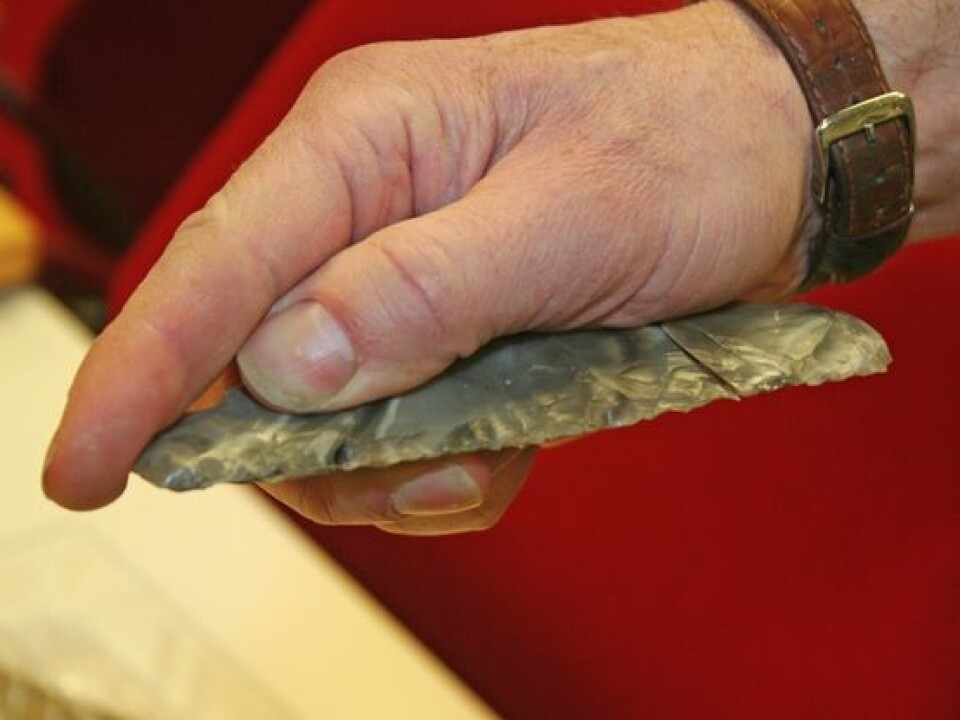
Indeed the climate was a little warmer 4,000-5,000 years ago but it could hardly have been ideal for farming then either.
Prescott says that much research about Europe in this era starts from the assumption that agriculture was an obvious advantage. From a site that was nearly a slab of stone way up in the mountains above a West Norwegian fjord you could turn that assumption around and say: Why on earth commit to farming?
“It would have been quite reasonable to give agriculture the cold shoulder. A farmer is tied down to one spot, people would get a less varied diet and become vulnerable to territorial conflicts,” says the professor.
Attraction
Nevertheless, Norway eventually became an agricultural country. Prescott thinks the reason behind it is the so-called bell-cup culture, a common European culture that swept across Europe 4,400 years ago.
In other regions of Europe this culture replaced earlier agricultural cultures, but Prescott thinks that in Norway it spearheaded the introduction of agriculture.
The bell-cup culture is named after its use of fired clay urns formed like inverted church bells. Agriculture was an integral element.
It is the first European culture with distinct differentiations in social power positions from high to low. It represents the end of the Stone Age and the beginning of the new age in which weapons and religious and decorative objects made of metal.
Later Norwegian history, with its Bronze Age chiefdoms followed by the petty kingdoms of the Iron Age, would be unthinkable without a basis in the agriculture that now spread along the coast.
Warrior culture
The bell-cup culture might sound like it centred around an affinity for knick-knacks and the cultivation of tea party etiquette. Not so − it was a male warrior culture.
Daggers, arrowheads and wrist protectors for bowmen are among the essential artefacts found in graves.
Archaeological digs from all over Europe show that it spread rapidly from North Africa to Scandinavia.
By becoming part of this culture Norwegians joined a common European identity. This might have been the main attraction – transforming into a part of a greater network and gaining the opportunity to travel and trade for exotic items which provided status.
Prescott thinks this is an essential element of the explanation for why agriculture put down roots in Norway. It was part of a new cultural package with an irresistible attraction.
“Participation in this culture entails becoming part of a greater world. The networks traded and transferred elite items – beautiful shiny objects and weapons. And they engendered a network of a social elite,” he says.
New finds
This novel understanding of a hazy but significant period in Norway has been presented by Prescott and several of his colleagues in their new studies. These are based on new discoveries, new excavation methods and new evaluations of old finds in Norway, in addition to research elsewhere in Europe.
Discoveries of longhouses, a residential system linked to agriculture, traces of fields, grain and sheep droppings along the entire coast from Østfold County to the Sunnmøre Region in central Norway comprise a part of this material. Important findings have been made at Slettabø in Rogaland County, Skrivarhelleren in Sogn- og Fjordane County and at Mjeltehaugen in Møre og Romsdal County.
These discoveries indicate that the entire package of foreign cultural innovations was adopted, not just selected parts.
Flint daggers modelled after bronze daggers became important status objects.
An element of this package must have been maritime expertise and a greater ability to travel along the coast and into the sea. Perhaps enlightenment about the use of metals could have arrived much earlier than believed.
Rapid spread
An aspect of this new theory of a breakthrough for agriculture in Norway 4,400 years ago is the downplay of earlier findings from a possibly earlier agriculture in the Oslo Fjord region. These date to around 6,000 years ago and are partly linked to discoveries of battle axes.
Prescott thinks these findings are ambiguous and uncertain and he doubts they can be interpreted to give agriculture such an early foothold.
Instead he points to the discoveries indicating a rapid diffusion of agriculture in “his” period 4,400 years ago.
Soft power
Not everyone switched to agriculture. But enough did so to leave traces of change along large stretches of coast.
Prescott thinks this cannot be explained by a gradual development based on local prerequisites. He argues that it had to have come from outside influence.
“Colonies may have been established. And locals saw that the newcomers are militarily and politically superior,” says Prescott.
These newcomers were powerful, but researchers think are hesitant about considering this in terms of an invasion essentially based on the use or threat of force and power.
The new culture could have gained sway by applying soft power, along the lines of the USA’s global surge of influence after World War II.
This concept is used to explain how the USA’s influence has not been solely military and having nuclear weapons capabilities. Rather it is largely to the lure of jeans and rock n’ roll, to Hollywood and Disney, etc. Maybe the new Stone Age culture spread in the same way.
Society could have been ripe for a change. The old hunter culture where all tribal members were fairly equal and nobody was wealthier than others could have had its inner tensions and antagonisms – making it interesting for individuals to seize new opportunities provided by agriculture and gain more contact with the outside world.
From North Jutland?
The immigrants might have come from the area around Limfjord, a sound on Denmark’s North Jutland. This was a centre of power at the time.
Colonisation advances haven’t come from a totally alien culture, but rather through journeys to areas that were already known. Settlements on the south coast of Norway are geographically close and this is a Norwegian landscape that most closely resembles the region the foreigners came from.
Maybe attachments had already been made with the locals; maybe some who were on the dawn of adopting the bell-cup culture had been there before.
Denmark isn’t the only possibility – the immigrants could have come from other places on the European continent, such as Northern Germany of the Netherlands.
New world
We know from new scientific technology employed by archaeologists that people migrated and travelled extensively in prehistoric times. Among other things, chemical analyses of some skeletal remains found at Stonehenge show these were people who had been born in other parts of Europe and had migrated to England during their lifetimes.
With the bell-cup culture and agriculture one of its key elements, Norwegians could become part of a common European network.
“This is one world that replaces another,” says Prescott.
It could all have happened in a single generation, in other words, a real revolution.
---------------------------------------------------
Read the article in Norwegain at forskning.no
Translated by: Glenn Ostling






























